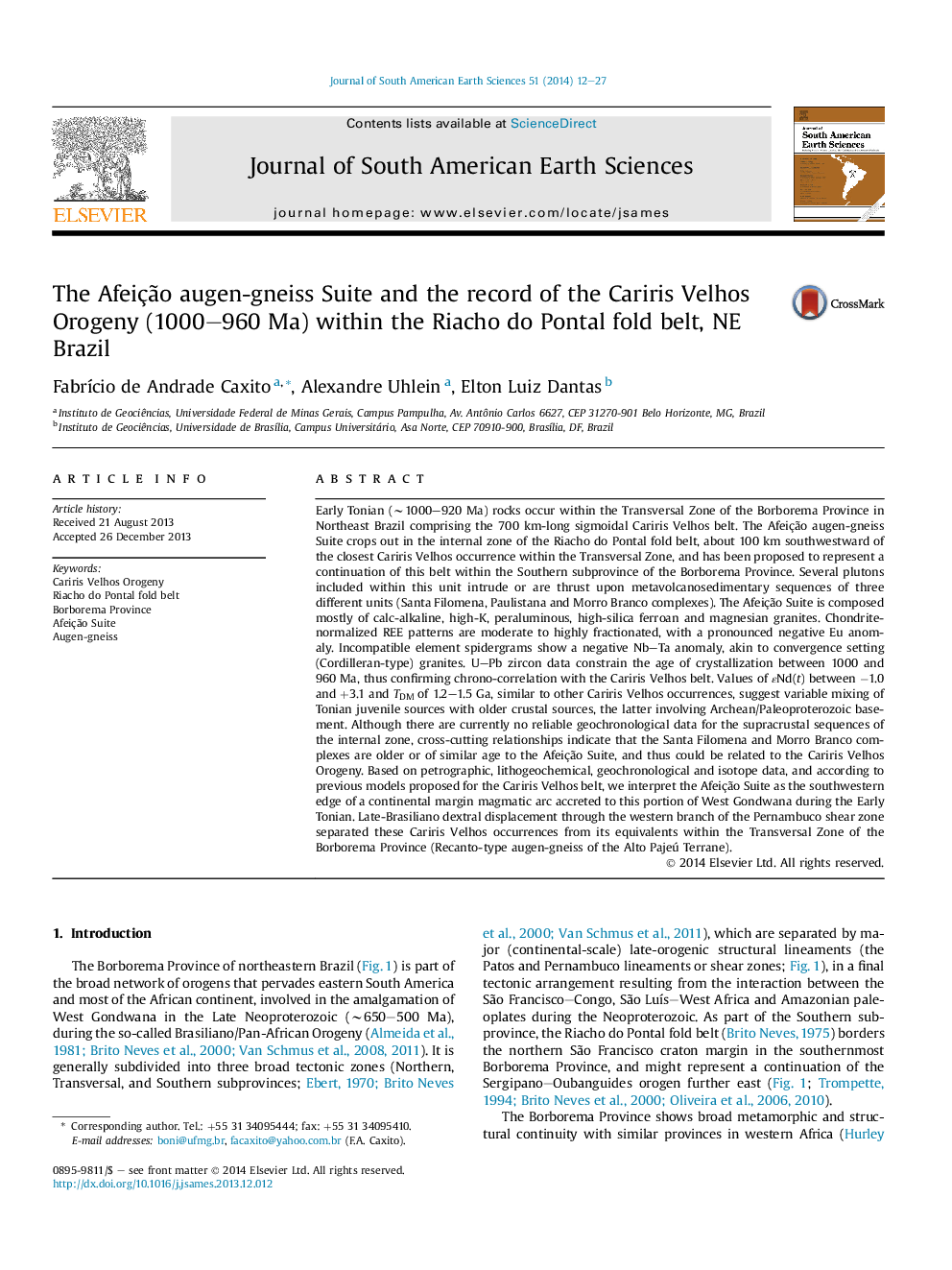| Article ID | Journal | Published Year | Pages | File Type |
|---|---|---|---|---|
| 4682268 | Journal of South American Earth Sciences | 2014 | 16 Pages |
•Petrography, lithogeochemistry and geochronology of the Afeição augen-gneiss Suite.•These augen-gneisses represent the southwestern edge of the Cariris Velhos belt.•They are part of a Tonian (1000–960 Ma) continental margin magmatic arc.•Late-Brasiliano strike-slip shearing isolated these from other Cariris Velhos rocks.
Early Tonian (∼1000–920 Ma) rocks occur within the Transversal Zone of the Borborema Province in Northeast Brazil comprising the 700 km-long sigmoidal Cariris Velhos belt. The Afeição augen-gneiss Suite crops out in the internal zone of the Riacho do Pontal fold belt, about 100 km southwestward of the closest Cariris Velhos occurrence within the Transversal Zone, and has been proposed to represent a continuation of this belt within the Southern subprovince of the Borborema Province. Several plutons included within this unit intrude or are thrust upon metavolcanosedimentary sequences of three different units (Santa Filomena, Paulistana and Morro Branco complexes). The Afeição Suite is composed mostly of calc-alkaline, high-K, peraluminous, high-silica ferroan and magnesian granites. Chondrite-normalized REE patterns are moderate to highly fractionated, with a pronounced negative Eu anomaly. Incompatible element spidergrams show a negative Nb–Ta anomaly, akin to convergence setting (Cordilleran-type) granites. U–Pb zircon data constrain the age of crystallization between 1000 and 960 Ma, thus confirming chrono-correlation with the Cariris Velhos belt. Values of εNd(t) between −1.0 and +3.1 and TDM of 1.2–1.5 Ga, similar to other Cariris Velhos occurrences, suggest variable mixing of Tonian juvenile sources with older crustal sources, the latter involving Archean/Paleoproterozoic basement. Although there are currently no reliable geochronological data for the supracrustal sequences of the internal zone, cross-cutting relationships indicate that the Santa Filomena and Morro Branco complexes are older or of similar age to the Afeição Suite, and thus could be related to the Cariris Velhos Orogeny. Based on petrographic, lithogeochemical, geochronological and isotope data, and according to previous models proposed for the Cariris Velhos belt, we interpret the Afeição Suite as the southwestern edge of a continental margin magmatic arc accreted to this portion of West Gondwana during the Early Tonian. Late-Brasiliano dextral displacement through the western branch of the Pernambuco shear zone separated these Cariris Velhos occurrences from its equivalents within the Transversal Zone of the Borborema Province (Recanto-type augen-gneiss of the Alto Pajeú Terrane).
Graphical AbstractFigure optionsDownload full-size imageDownload as PowerPoint slide
